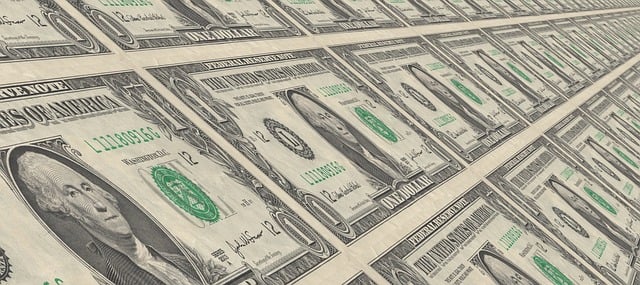
Currency exchange rates reflect the value of one currency relative to another at current market prices. The real exchange rate (RER) represents the purchasing power of a currency compared to another, considering both the exchange rate and the prices of goods. It is calculated as the ratio between the amount of a country’s currency needed to purchase a basket of goods abroad (after converting into the foreign currency) and the amount needed to buy the same basket domestically. There are multiple methods to measure the RER. In essence, the real exchange rate equals the nominal exchange rate multiplied by the relative prices of a comparable basket of goods in the two countries. For instance, the purchasing power of the US dollar relative to the euro can be expressed as the dollar cost of one euro multiplied by the euro price of a unit of the basket, divided by the dollar price of the same basket. This calculation produces a dimensionless value. If all goods were perfectly tradable and consumers in both countries bought identical baskets, purchasing power parity (PPP) would hold, implying that the real exchange rate would always equal 1.
Current currency value may be influenced by our market-making and related activities, including hedging and pre-hedging, which we undertake to manage risk, support client transactions, and offset any related exposure. These actions may involve trading prior to order execution. Such trades will be structured to reasonably correspond to the risks linked with the potential transaction with you. These activities could impact the underlying currency price, thereby affecting your transaction costs or proceeds. You acknowledge that we are not responsible for any price changes resulting from these activities. If our pre-hedging or hedging trades conclude at prices better than the agreed execution price or benchmark, we will retain the positive difference as profit, and you will have no claim to such gains. We may also hold proprietary positions in specific currencies. You should assume that we have a financial incentive to act as the counterparty in your transactions. Any profits from these positions remain solely ours, and you will have no entitlement to them. You acknowledge that these foreign exchange transactions are the result of arm’s-length negotiations. You are a customer, and these transactions do not create a principal/agent relationship or any other arrangement that would impose a heightened duty on us.
Exchange rate today refers to the worth of one currency when converting it into another. It can also be understood as how much one nation’s currency is valued in comparison to another currency. Both reference exchange rates and mid-market exchange rates follow ISO 4217:2015 standards, which define a three-letter alphabetic code and a three-digit numeric code for each currency. Sending money internationally can be costly. Banks may charge up to 5% in hidden fees for overseas transfers, making the total cost much higher than expected. A more affordable option is Wise (formerly TransferWise), which is frequently less expensive. For instance, transferring 500 USD to EUR could be as much as 70% cheaper with Wise compared to certain providers.*
Exchange rates fluctuate largely because of differences in inflation and interest rates between countries. A moderate level of inflation — or a gradual rise in the prices of goods and services — is generally viewed as a sign of a growing economy, since it reflects increasing demand. However, if prices rise too quickly, it can make everyday goods and services harder to afford. Central banks aim to maintain this balance by adjusting interest rates. For instance, the Bank of England targets an inflation rate of around 2%. When inflation falls below that target, the central bank might lower interest rates. Cheaper borrowing costs and lower returns on savings encourage people and businesses to spend more, which can boost demand and push inflation up. Conversely, if inflation accelerates too quickly, the central bank may raise interest rates. Higher borrowing costs and better returns on savings tend to reduce spending, helping to slow inflation.In addition, higher interest rates often strengthen a country’s currency. This can attract foreign investors seeking better returns, bringing more money into the country and increasing demand for its currency.
How to calculate currency value: In connection with our market-making and other operations, we may engage in hedging strategies, including pre-hedging, to manage our risk, support client transactions, and offset any related exposure. These strategies may involve trading before executing your order. Such trades are intended to be proportionate to the potential risk of the transaction with you. These activities could influence the underlying currency’s price, which may impact your costs or proceeds. You acknowledge that we are not liable for these price fluctuations. If our pre-hedging or hedging actions result in execution at prices better than the agreed-upon price or benchmark, we retain the positive difference as profit from the transaction. You will not have any entitlement to these gains. Additionally, we may take proprietary positions in specific currencies. You should assume that we have a financial interest in acting as a counterparty to your transactions. Any profits from these activities are exclusively ours, and you will have no claim to them.
Effect of exchange rate on imports is evident in several notable findings from our empirical study: (i) firms tend to reduce both the value and variety of imports from their trading partners when faced with higher exchange rate volatility; (ii) this adverse impact is stronger for firms with greater financial vulnerability; and (iii) private and foreign-owned firms are more likely to cut back on the probability of importing (extensive margin) under increased exchange rate fluctuations. These observations highlight the discouraging effect of exchange rate volatility on firms’ import activities. Fluctuating exchange rates raise price uncertainty for importing firms, effectively acting as an increase in sunk costs (Héricourt & Poncet, 2013). Figure 1 depicts the timeline of the import process. In the initial stage, firms determine their sourcing strategy and secure production loans and foreign currency from banks. The second stage involves completing the import transaction and making payments to both suppliers and the bank. As illustrated, exchange rate risk arises when there is a significant time lag between these stages due to the preparation and shipping of goods, which typically takes several weeks to months.
Effect of currency depreciation in emerging markets often sparks fears of “contagion,” where investor anxiety spreads to other regional currencies. A prominent example was the 1997 Asian financial crisis, which began with the collapse of the Thai baht and led to steep declines across most Southeast Asian currencies.Effect of currency depreciation was also evident in the summer of 2013, when currencies like the Indian rupee and Indonesian rupiah fell sharply amid concerns that the Federal Reserve might scale back its large-scale bond-buying program. Effect of currency depreciation: A fall in a currency’s value compared to other currencies can occur due to economic conditions, differences in interest rates, political uncertainty, or investors’ heightened risk concerns. While it poses certain challenges, a steady depreciation can boost the competitiveness of exports, which may lead to an improvement in the country’s trade balance.
Changes in the exchange rate directly influence inflation. When the domestic currency depreciates, imported goods and services become more expensive, pushing up overall price levels. The current account, which measures the balance of trade between a country and its partners, captures all international transactions for goods, services, interest, and dividends.A current account deficit indicates that a nation is spending more on imports and foreign trade than it is earning from exports, relying on capital inflows from abroad to finance the shortfall. Put differently, the country demands more foreign currency than it earns through exports while supplying more of its own currency than foreigners are willing to buy. This imbalance increases the demand for foreign currency, which depresses the domestic currency’s value until local goods and services become affordable for foreign buyers and foreign investments become costly enough to limit domestic purchases of overseas assets.
Currency appreciation meaning an increase in the value of one currency relative to another in a forex pair. Traders often refer to a currency as “strengthening” against another, indicating that it either costs more to purchase or that it can buy more of the other currency when exchanged. Learn how to take positions in the world’s largest financial market. In forex, traders purchase or “go long” on a currency pair anticipating that the base currency will rise in value compared to the quote currency. To grasp currency appreciation, it helps to understand how currency pairs function. A currency pair consists of a base currency and a quote currency. The base currency is always valued at one, while the quote currency shows how much of it is needed to acquire a single unit of the base currency. For instance, in the EUR/USD pair, the euro is the base currency and the US dollar is the quote currency. If the pair’s rate is 1.25, it means 1.25 dollars are required to purchase one euro.
Best time to exchange currency depends on your destination and the type of money you need. For widely used currencies like the euro or US dollar, it’s usually better to exchange before you travel. You’ll often get better rates in the UK, and it saves you the hassle of finding a bureau abroad. For less common currencies, waiting until you arrive can sometimes offer more favorable rates. Regardless, it’s wise to have a small amount of local cash with you in case ATMs or exchange offices aren’t immediately available. Before travelling, check whether your UK pounds can be exchanged at your destination. If not, you may need to rely on debit or credit cards, which could come with high foreign transaction fees or might not be accepted at all. You can also monitor rates using tools like XE.com for mid-market currency rates, or sign up for free alerts from providers such as Travelex to be notified when the rates improve. Comparison websites are another useful way to find the best place to buy your travel money.



